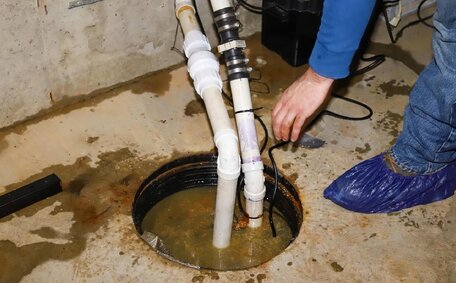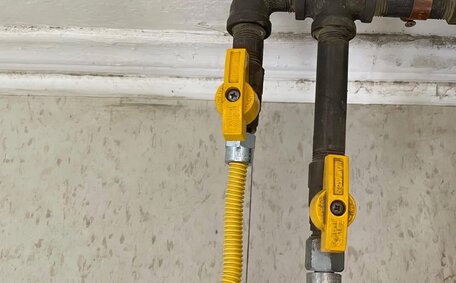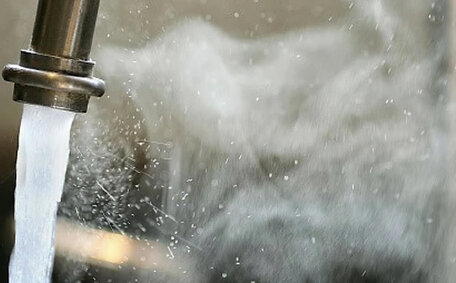Types of Hot Water Systems and Overview of Maintenance Needs
Among the most common types of domestic hot water systems, you’ll find the following varieties:
- Electric hot water systems use an electric heating element to heat water stored in a tank. Basic maintenance involves checking electrical connections, performing a flush of the tank annually to remove sediment buildup, and testing the temperature pressure relief (TPR) valve.
- Gas hot water systems, utilising a gas burner, heat water which is then stored in a tank. Maintenance tasks include checking the pilot light, making sure gas lines and connections are sound, draining and flushing the tank, and testing the TPR valve.
- Heat pump hot water systems efficiently transfer heat from the air to the water in the tank. Regular maintenance, such as ensuring that sensors and circulation pumps are functioning correctly, significantly enhances system efficiency.
- Solar hot water systems use solar panels to heat water, converting solar energy directly or via a heat transfer fluid. Regular inspection of panels, pipes, and valves is essential to ensure efficient operation and prevent leaks or sediment accumulation.
Regular checks of TPR valves across all systems are key to maintaining safe water temperature and pressure. For quality hot water, replace the sacrificial anode in your tank every 5-8 years. Regular maintenance ensures the longevity your hot water system enjoys and prevents potential issues from ballooning into costly repairs.
A yearly service by a licenced plumber is optimal for maintenance, though this often goes ignored. For questions on system maintenance, feel free to contact our knowledgeable team.
Checking for Leaks
It’s crucial to engage in system maintenance by regularly checking your hot water system for any leaks. Be attentive for any water pooling or dampness in the area around your pipes, valves, connections, and storage tank. Minor drips, if ignored, may lead to major leaks and impact your water heating equipment.
To manage energy consumption, homeowners should conduct a visual inspection every three months, focusing on:
- All pipe connections, joints, and valves
- The sides and base of the hot water tank
- Areas where pipes enter/exit walls
- The drain valve at the bottom of the tank
- The area below the TPR valve on the tank
Closely monitor your monthly hot water usage to quickly identify unexpected increases that might indicate leaks. Reach out if you ever notice decreased hot water pressure, cloudy/discoloured water, or think there may be an issue.
Detecting issues early within your plumbing framework simplifies repairs and forestalls costly water damage or mould growth. Even small drips can waste hundreds of litres over time, increasing bills. Our licenced technicians possess the necessary tools and expertise to perform maintenance repairs and ensure your system is leak-free.
Testing Temperature and Pressure Relief Valves
Temperature and Pressure Relief (TPR) valves are critical safety features, preventing excessive pressure in hot water systems. They help prevent excessive pressure buildup from unsafe water temperatures, avoiding explosion risks. It’s crucial to test TPR valves regularly to verify their ability to relieve excess pressure and ensure system safety.
To maintain safety, follow this straightforward process every six months to test your TPR valve:
- Locate the TPR valve on your hot water heater. It will have a lever pointing up and a drain pipe leading downward; If the setup appears incorrect, it’s time to call a plumber.
- Check the drain pipe is extended to a safe discharge point on the floor at least 150 mm away, avoiding contact with any electrics.
- Briefly lift and release the TPR lever to flush the valve. Expect a gush of hot water upon release.
- Check that water flowed freely then stopped when closing the lever. If water did not flow or the valve did not seal again, it may be time to inspect your water heater and call professional plumber for repair.
A properly functioning TPR valve enhances the efficiency your hot water system by opening under excessive tank pressure, releasing hot water to prevent issues until manually closed again. Failure risks very dangerous pressure and heat levels in your system.
Let Our licenced team inspect if you have any issues testing your TPR valve to ensure its optimal functionality yearly. Servicing your hot water system and maintaining all valves helps optimise performance and prevent breakdowns.
Inspecting and Replacing Sacrificial Anodes
Sacrificial anodes are indispensable in shielding your hot water supply within tank-style hot water systems from corrosion. They help prevent internal corrosion that could drastically shorten its lifespan as a hot water heater. Consisting of materials more reactive than steel, the anode rod attracts corrosion. This is vital in preserving the tank’s integrity during the water heating process.
Sacrificial anodes generally last up to 2 years; it is important for homeowners to check for signs of wear that suggest an imminent need for replacement. Look for:
- Anode diameter being less than 6mm
- Sections of the rod being rough, pitted or flaky
- The anode no longer being securely attached
Replacing worn anodes is a critical step in preventing corrosion and significantly extending your hot water system’s lifespan. Our licensed technicians have the expertise to professionally inspect and replace anode rods, imperative for extending the lifespan hot water tanks boast.
Note: Many modern water heat pump and tankless systems, also known as on-demand heaters, don’t require anodes. Consult the manufacturer or let our team provide guidance on maintenance requirements for your specific model.
Flushing Tanks and Pipes to Remove Sediment Buildup
Sediment, mineral deposits, and scale can accumulate over time inside hot water system tanks and pipes, leading to decreased efficiency. This buildup reduces water flow, heating efficiency, and the lifespan of your system.
Signs that your hot water system needs flushing include:
- Decreased hot water pressure
- Rumbling or banging noises
- Reduced hot water capacity
- Musty or metallic odours from hot water
By flushing the tank and pipes of your hot water system, you can prevent sediment buildup and maintain efficiency. Follow this process:
- Turn off power to the hot water system at the circuit breaker
- Connect a hose to the drain valve at the base of the tank
- Open the cold water pressure relief valve at the top of the tank
- Open the drain valve and allow water to flow out until it runs clear with no sediment
- Close drain valve and refill system, then restore power
Annual flushing of your water heating system promotes efficiency and extends its lifespan. If you require assistance with hot water service maintenance, our team is ready to help at any time.
Setting Water Temperature for Energy Efficiency
Proper regulation and maintenance of your hot water system’s temperature are crucial for optimal performance and to avoid reduced efficiency. Thermostats control the heating element or gas burner to reach and maintain a preset temperature. Although a higher setting might offer hotter baths, an excessively high temperature can waste energy.
We advise setting your hot water temperature between 50-60C to prevent scalding risks and conserve energy. Here’s how to adjust your thermostat:
This temperature range strikes a balance between reducing energy use and ensuring comfortably hot water for household use.
- Locate the thermostat on your hot water system’s control panel.
- Turn the dial to lower or raise the temperature setting within the 50-60C range.
- Give the system several hours to heat the water to the new thermostat temperature.
Checking that your hot water isn’t overheating can also optimise efficiency. Installing a tempering valve or mixing valves additionally helps prevent scalding. Contact our team if you need any assistance adjusting settings or have further questions about your system.
Signs Your System Needs Servicing
There are several signs indicating your hot water system needs professional servicing:
- Decreased or inadequate hot water temperature
- Changes in water pressure
- Strange noises like gurgling or banging
- Discoloured water or sediment in the hot water
- Corroded components or leak points
- Higher than normal energy bills
Without proper maintenance, hot water systems can deteriorate over time. Issues like mineral buildup, sediment accumulation, deteriorating parts, and pressure imbalance can crop up. Left unaddressed, these problems tend to escalate.
Noticing the above signs means your system likely needs servicing and repairs to restore functionality and efficiency. Our technicians, who are licenced experts, will thoroughly inspect your system to identify any issues affecting performance or lifespan. We can flush heaters and pipes, replace worn parts, adjust settings, and more.
Place your confidence in our team to get the water system your residence depends on running optimally. Schedule an inspection or repairs as soon as you observe any potential problems. Our plumbing services are aimed at extending the lifespan of water heaters, reducing the need for more expensive replacements.
Benefits of Preventative Maintenance
Regular preventative maintenance can maximise your system’s performance and extend its operational lifespan, offering these benefits:
- Enhances energy efficiency, which can reduce your electricity and gas bills
- Lowers costs compared to emergency repairs if problems escalate
- Improves hot water flow, pressure, and capacity
- Reduces sediment buildup and corrosion inside the system
- Extends the operational lifespan by 5-10 years or more
- Maintains water safety in your home system with properly functioning valves
- Prevents leaks that can cause water damage if unattended
It’s essential to ensure preventative maintenance like flushing heaters, testing TPR valves, replacing anodes, inspecting for leaks, and adjusting thermostats to prevent issues before they become serious. Keeping your hot water system well-maintained aligns with achieving optimal temperature, flow, safety, efficiency, and longevity.
Servicing can ensure the longevity and efficiency of your residential or commercial hot water system, so contact our licenced technicians for tips in the Kellyville area.
Annual Inspections by a Licensed Plumber
We highly recommend scheduling annual inspections of your new hot water service by a licenced professional plumber. Our technicians conduct thorough checks covering all aspects of your system to identify potential problems before they cause disruptions.
Our inspection process includes searching for leaks, mineral deposits, corrosion, and other indicators of deterioration. Critical components such as pumps, heating elements, thermostats, and the hot water unit are meticulously examined, depending on your system type.
We conduct tests on all valves and safety components to ensure proper operation and promptly address any potential issues. Replacing worn parts like sacrificial anodes prevents further deterioration.
Preventative maintenance and timely repairs conducted during annual inspections can significantly enhance your hot water system’s performance and lifespan. Well-maintained heaters can last with significantly fewer breakdowns and consistent hot water flow. You’ll also save on energy bills over time.
Having trust in being a part our acknowledged licenced team at Kellyville Plumbing means your annual inspection needs are met with expertise. We service all common residential and commercial hot water unit types. Contact us online or call 1300 349 338 to schedule hassle-free professional maintenance catered to your system.
Extending the Lifespan of Your Hot Water System
Consistent maintenance is pivotal to prolonging the life of your hot water system well beyond the expected duration. Simple practises like insulating hot water pipes properly, setting appropriate temperatures on thermostats, upgrading to higher efficiency models when replacing older heaters, and moderating usage with flow restrictors on showers can all contribute to longevity.
Fitting isolation valves on inlet and outlet pipes streamlines regular maintenance tasks. Replacing sacrificial anodes every five years, flushing sediment buildup annually, and getting a licenced technician to attend to any leaks early are also vital for longevity. Thermostatic tempering valves that prevent scalding and lower corrosion are worthwhile upgrades too.
While quality systems can last up to 15 years if very well-maintained, it’s generally advisable to budget for a replacement every 10-12 years. We offer advice on when upgrades or replacements can extend lifespan your hot water system, making the best financial sense - contact us anytime.
Upgrading to newer models brings enhanced efficiency, reliability, and safety.






